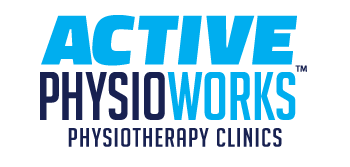Sitting at Work
Sep 23, 2014
Do you spend most of your workday sitting at a desk? Recent data suggests that approximately half of all office workers are affected by back pain during their career, so how can you protect yourself? Well first it is beneficial to understand some of the factors related to working a desk job that can predispose you to developing pain in your low back. A few examples include:
Sitting posture: As we move further from a neutral spine position, the load on the spine increases. Sitting places 140-150% more load on our spines discs that standing, while sitting with poor posture can place nearly 200% more load through our discs than standing!
Ergonomics: Poor office set up can cause unnecessary amounts of reaching, bending and turning, which can be harmful to your back. Seat height, backrest angle and monitor/keyboard height are also potential ergonomic contributors to back pain.
Repetition: Frequently recurring tasks, such as answering the phone or reaching for a filing cabinet or printer, can cause muscle imbalances and overuse injuries.
Inactivity: Prolonged static positions are unnatural for our bodies; we rely on frequent repositioning to distribute compressive loads on our joints. Sitting slouched for as little as 20 minutes can increase laxity of some spinal ligaments, which can take 30 minutes or more to regain their previous level of stiffness!
Fortunately all of these factors are modifiable and can be remediated. So what are some things you can work on to help protect your back?
Strengthen: Prolonged sitting, especially with poor posture, reduces muscle activity and strength in key stabilizing muscles for the spine, such as your transverse abdominus. An exercise program aimed at strengthening these muscles is crucial to supporting your low back.
Stretch often: Sitting can predispose certain muscles, such as hip flexors and back extensors, to become shortened and tight. Stretching these muscles frequently is vital.
Correct posture: Sitting with proper posture can reduce load on spine and help to prevent common muscle imbalance patterns from developing.
Move frequently: The highest level of scientific evidence available recommends general physical activity for low back pain sufferers. Standing, walking or sitting on an unstable surface such as a yoga ball are all ways that you can incorporate a bit of movement into your daily work routine. Get up from your desk every 30-60mins, and ensure you are getting 150 minutes of moderate-vigorous physical activity outside of work each week!
At Active Physio Works our physiotherapists can assist you in taking all of the necessary steps to keep low back pain out of your workspace! We can assist you in developing an exercise program that works with your job and can provide you with tips and tricks to increase your activity levels at work. We can also help you return to working pain free if you are currently experiencing low back, neck or shoulder pain.
Contact us today at one of our 4 clinics to book an appointment! Bring in a picture of you office/workspace set-up to your first appointment and we can help to identify potential red flags in your work environment!
Please add your bio info through your member profile page, or through your dashboard.

